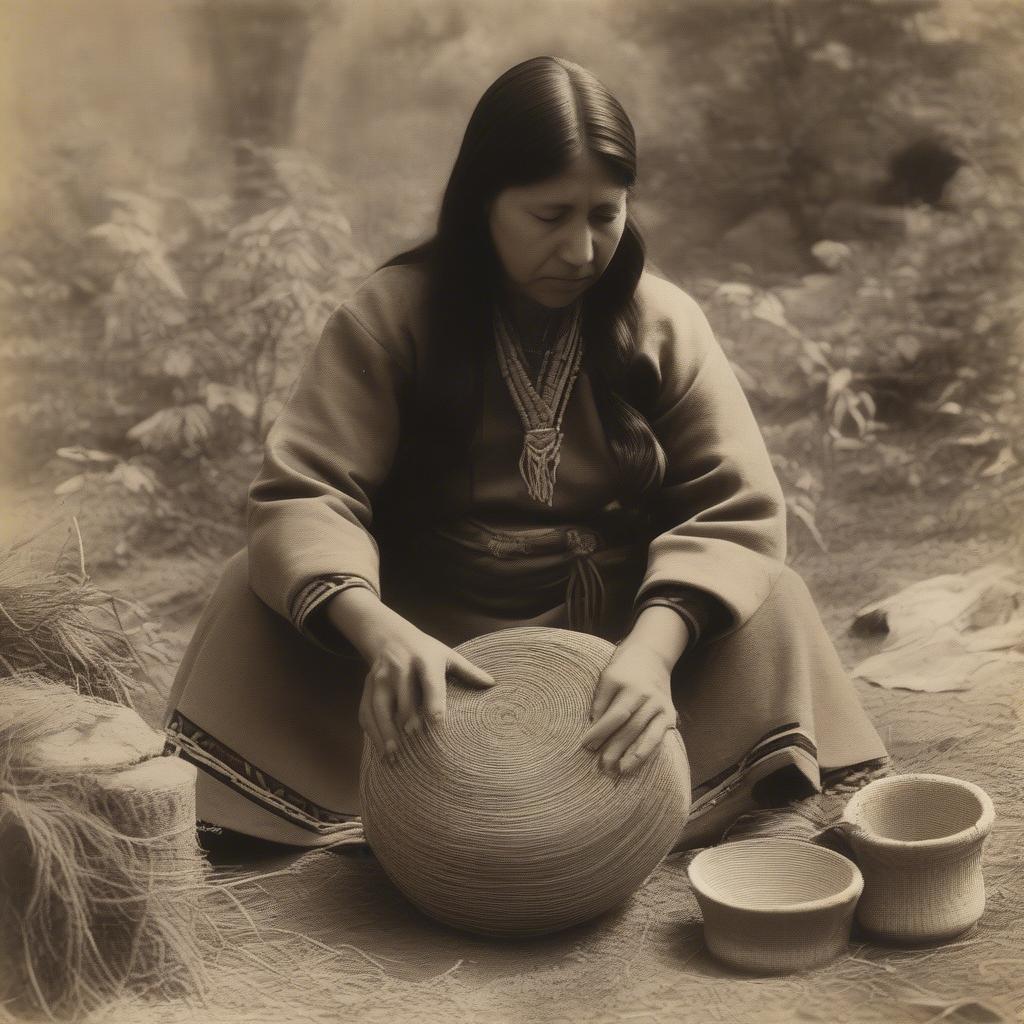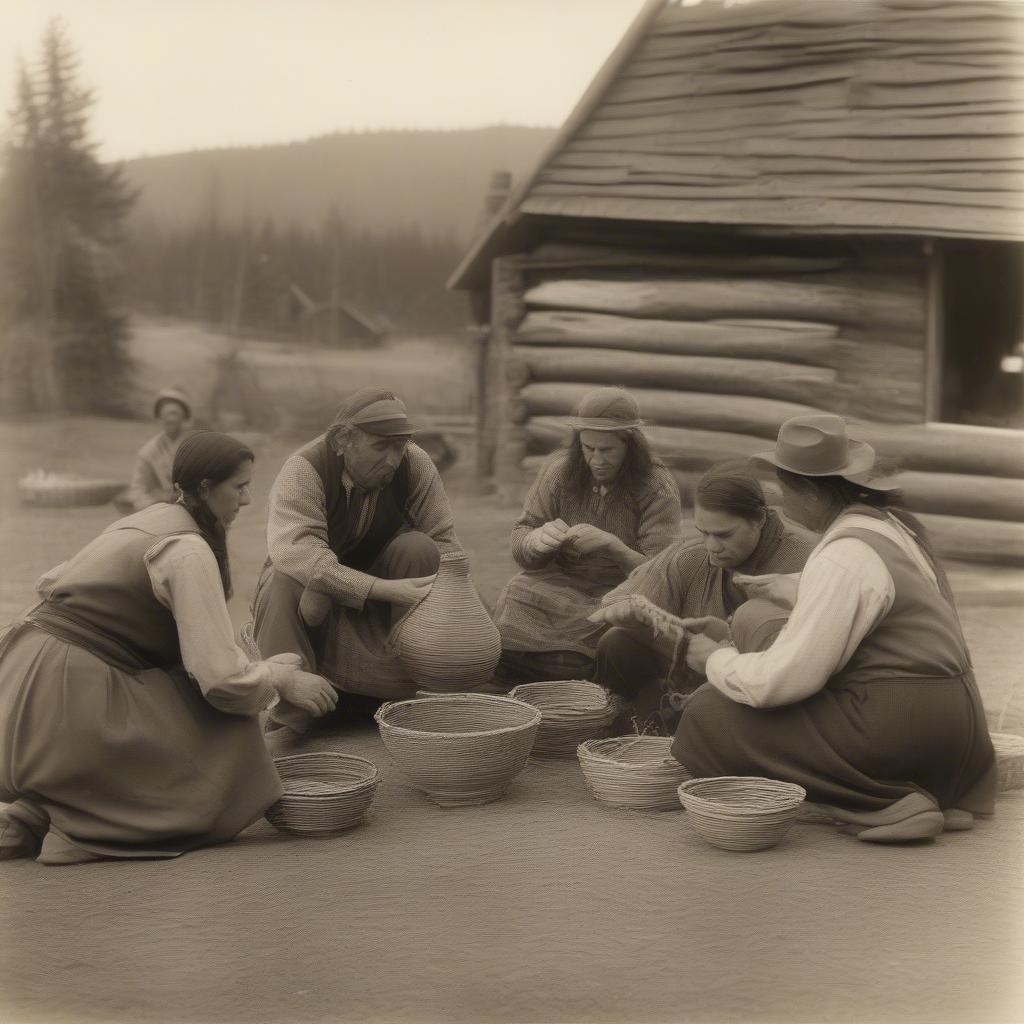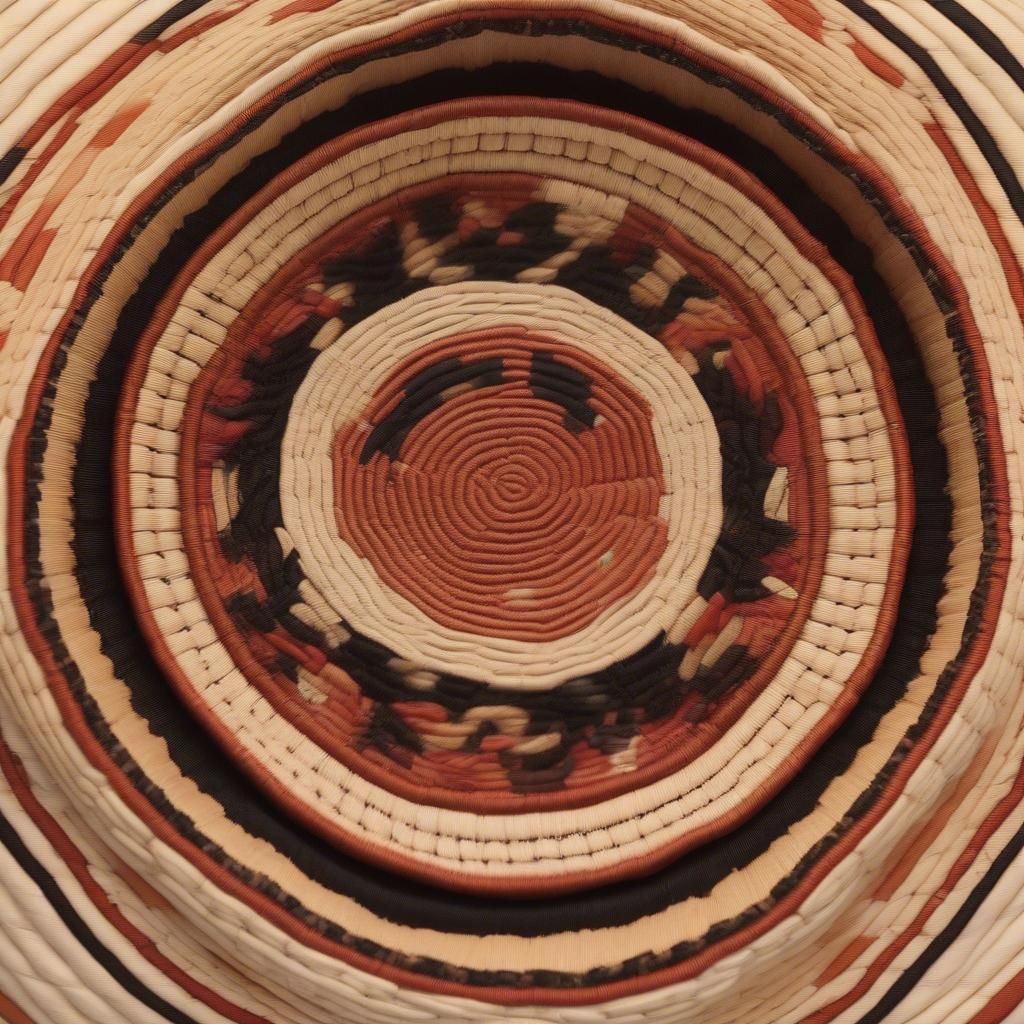Basket Weaving
Native Indians Taught Basket Weaving to Settlers: A Legacy of Craftsmanship
Native Indians teaching basket weaving to settlers is a significant part of American history, reflecting cultural exchange and survival. This article explores the rich history of this craft, its impact on settler communities, and the enduring legacy of these traditional techniques.
The Art of Basket Weaving: A Necessity and an Art Form
For centuries, basket weaving has been integral to Native American cultures, far beyond a simple craft. Baskets served practical purposes, from storing food and carrying water to cradling infants. They were essential tools for daily life, reflecting a deep understanding of the natural world and the materials it provided. Different tribes developed unique styles and techniques, often incorporating intricate designs that told stories and reflected their cultural identity.  Native American woman expertly weaving a traditional basket
Native American woman expertly weaving a traditional basket
How Native Indians Taught Basket Weaving to Settlers: A Story of Exchange and Adaptation
When European settlers arrived, they faced the challenges of a new environment. Native Americans shared their knowledge of survival skills, including basket weaving. This exchange wasn’t always equal, but it undeniably shaped the early settlers’ ability to adapt. They learned to utilize readily available materials like willow, reeds, and grasses, adapting Native American techniques to create their own baskets for practical use. The settlers recognized the durability and functionality of these woven vessels, incorporating them into their daily routines.  Settlers learning basket weaving techniques from Native Americans
Settlers learning basket weaving techniques from Native Americans
Regional Variations and the Evolution of Basketry
As settlers moved across the continent, regional variations in basketry emerged, influenced by local materials and the specific needs of different communities. For example, settlers in the Northeast utilized readily available hardwoods like ash and oak, while those in the Southwest favored yucca and willow. These regional variations demonstrate how settlers adapted Native American techniques while incorporating their own influences.
The Enduring Legacy: Preserving Tradition and Fostering Innovation
Today, the legacy of Native American basket weaving continues to inspire contemporary artisans. Many Native American communities actively preserve and teach traditional techniques, ensuring the survival of this rich cultural heritage. Contemporary basket makers often blend traditional methods with modern materials and designs, pushing the boundaries of the craft and creating innovative works of art. These artists honor the past while embracing the future, demonstrating the enduring power of this ancient art form.
What Materials Did Native Americans Use for Basket Weaving?
Native Americans used a wide range of natural materials for basket weaving, including willow, reeds, grasses, bark, roots, and even pine needles. The specific materials used often depended on the region and the tribe’s traditions.
How Long Does it Take to Weave a Basket?
The time required to weave a basket varies greatly depending on its size, complexity, and the skill of the weaver. A small, simple basket might take a few hours, while a large, intricate one could take weeks or even months to complete.
Are There Different Types of Basket Weaving?
Yes, there are numerous different types of basket weaving techniques, each with its own unique characteristics. Some common techniques include coiling, plaiting, twining, and wickerwork.
Where Can I Learn More About Native American Basket Weaving?
Many museums and cultural centers offer exhibits and workshops on Native American basket weaving. You can also find resources online and in libraries.
Conclusion
The story of native Indians teaching basket weaving to settlers is a testament to the importance of cultural exchange and the enduring power of traditional crafts. By understanding the history and significance of this art form, we can appreciate the intricate skills and rich cultural heritage it represents. Explore the world of basket weaving and discover the beauty and functionality of these handcrafted treasures.  A contemporary Native American basket incorporating traditional techniques and modern design elements.
A contemporary Native American basket incorporating traditional techniques and modern design elements.
If you need any further assistance or have questions about basket weaving, our team is available 24/7 to help. Contact us at our offices in Hanoi, Vietnam or Tech Avenue, Suite 12, San Francisco, CA 94105, USA.
